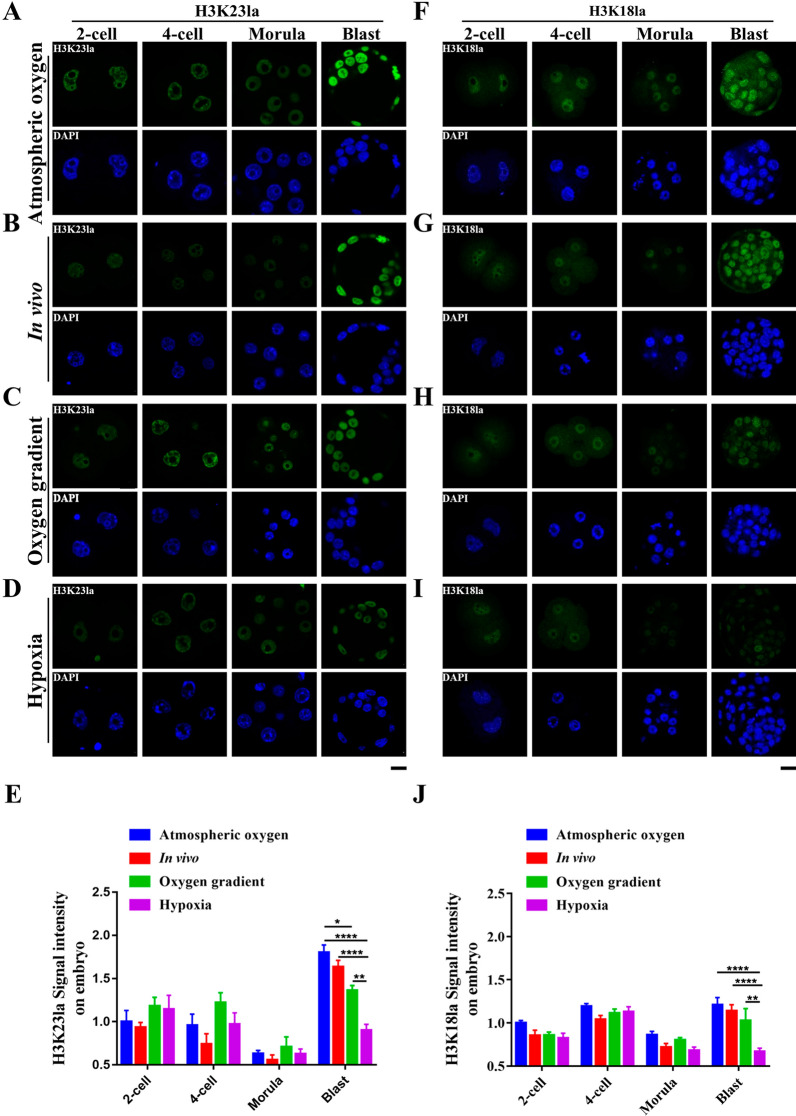Fig. 3.
Nuclear accumulations of H3K23la and H3K18la in pre-implantation embryos under different oxygen conditions. a–d Long-term hypoxic in vitro culture significantly reduced H3K23la in blastocyst stage embryos. Immunofluorescence staining for H3K23la (Green) in mouse embryos at the 2-cell (2-cell), 4-cell (4-cell), morula (Morula) and blastocyst (Blast) stages embryos collected from the atmospheric oxygen (a), in vivo (b), oxygen gradient (c) and hypoxia (d) groups. DNA was stained with DAPI (Blue). e Quantification of H3K23la fluorescence intensity in embryonic blastomeres (n = 30 blastomeres per group, 3 independent experiments). f–i Level of nuclear H3K18la was significantly reduced in blastocyst stage embryos under long-term hypoxic in vitro culture conditions. Immunofluorescence staining for H3K18la (Green) in mouse embryos at the 2-cell (2-cell), 4-cell (4-cell), morula (Morula) and blastocyst (Blast) stages embryos collected from the atmospheric oxygen (f), in vivo (g), oxygen gradient (h), and hypoxia (i) groups. DNA was stained with DAPI (Blue). More than 12 embryos were examined in each stage of each condition. Scale bars: 20 μm. j Quantification of H3K18la fluorescence intensity in embryonic blastomeres (n = 30 blastomeres per group, 3 independent experiments). Error bars indicated SEM. Statistical analysis was carried out using two-way ANOVA followed by Tukey's multiple comparisons test. ⁎p < 0.05; ⁎⁎p < 0.01; ⁎⁎⁎p < 0.001; ⁎⁎⁎⁎p < 0.0001

